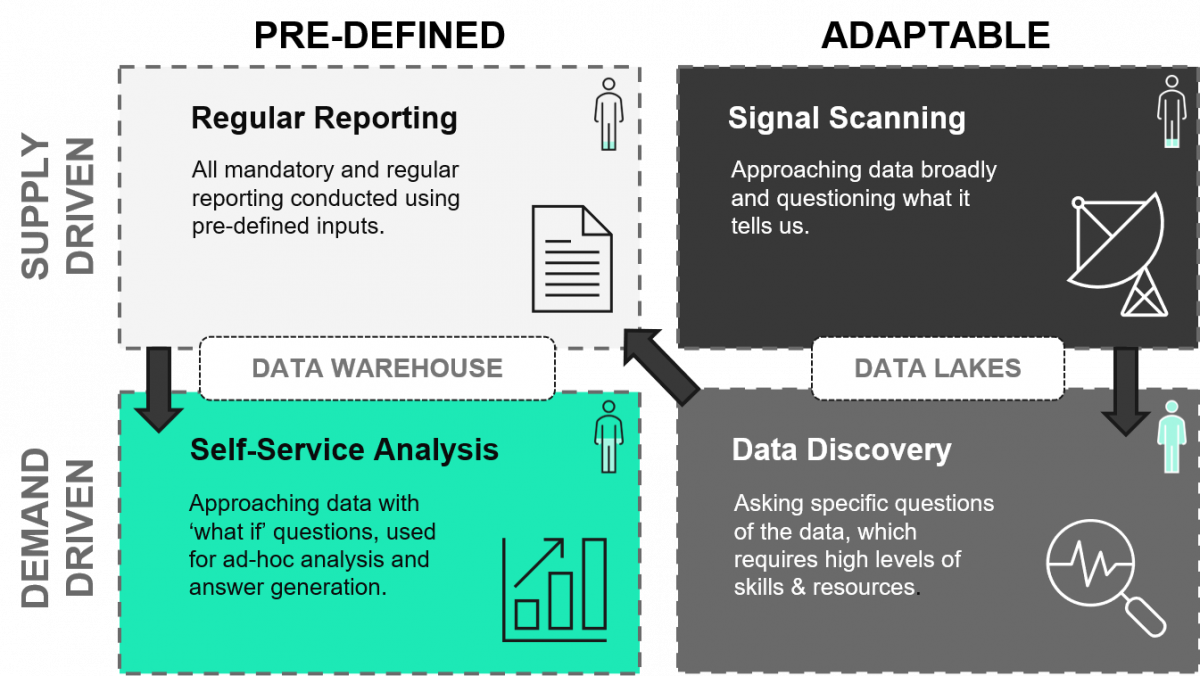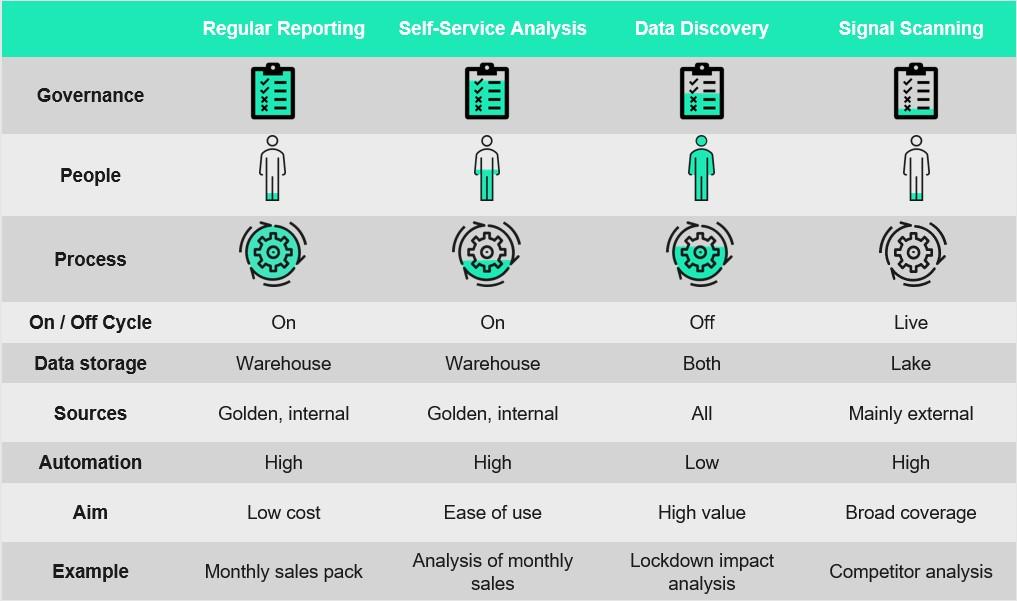Generating electricity in space to power our…

Where organisations go wrong and how to fix it.
Whilst it is widely accepted that the use of Management Information (MI) is paramount to drive decisions and enhance performance, organisations often fail to realise its true value. Despite having better access to data than ever, many organisations struggle to identify and act on the most relevant information, which can put them behind the competition.
In the current climate, companies often get flooded with data due to increasing ease of access. While this can be a benefit for organisations, who can obtain the data they need without much difficulty, it creates the risk of losing sight of the relevant data. The purpose of MI is to assist decision making, so if a piece of information does not inform or drive decisions, then it is essentially worthless. This issue of losing meaningful MI has become increasingly common and prevents organisations from achieving top performance and agility.
“We have loads of data but lose sight of the stuff that’s really important!”

Whilst businesses often report accurate data, time and resources are usually wasted on creating large decks with extra, unnecessary information. Not only does this starve other, more challenging areas of more resources, it fails to provide immediate insight for managers and stakeholders. Increasing efficiency in collecting and reporting MI would free resources for where they would have greater utility, for instance in navigating through unstructured data to inform faster decision making. Faster delivery of MI would also foster pro-active, rather than re-active changes, by enabling managers to spot and act on trends ahead of competition. To be efficient here, staff must be equipped with the right skills, and processes should be automated where appropriate.
“I spend so much time collecting data and creating reports when I’ve got more difficult things to do!”

One of the most obvious issues in MI is failing to consider the audience it is produced for. It is vital for the needs and preferences of the audience to be catered for to prevent confusion and ensure the audience is engaged. Data and information must always be contextualised when reporting to managers, especially those in senior positions, in order to provide immediate insight. Organisations often fall short by employing a ‘one-size-fits-all’ approach, when instead each report should be adapted for the different key decision makers within the business. MI should not try to cater to all stakeholders, as this will never produce the intended results or responses.
“I often receive dense, hard to process information that takes me hours to get through!”
In order to get the most value from MI, you need to determine your goals and the data available.
When creating your MI, it will either be pre-defined, or tailored. If your MI is pre-defined, it can be repeated and recreated at different times, as the inputs largely remain the same. If your MI is tailored, however, the information produced will be dependent entirely on the context and audience.
Your MI will require different types of data, which are stored in different places, dependent on whether it is pre-defined or tailored. Data lakes and data warehouses are both widely used for storing big data.
A data warehouse stores accurate, structured, and filtered data that has already been processed. This allows staff across the organisation to easily access and use information, and is therefore suitable to create pre-defined MI.
A data lake is a large pool of raw data which can be used for multiple purposes and is therefore largely unstructured. Data lakes allow flexibility and a cost-effective storage of large amounts of data. However, data lakes can be poorly managed and can accumulate large amounts of uncontrolled and irrelevant data. Consequently, it is usually data scientists and engineers that are best able to navigate through data lakes to generate useful information. When creating tailored MI, it would be best to use a wider data landscape, which would include both data lakes and data warehouses.
Taking the above into consideration, there are four distinct ways to approach MI.

Regular reporting is a supply-driven approach to MI that all organisations engage in to meet set requirements, ranging from reporting operating and financial data, to providing information for key decision makers. Regular reporting also enables businesses to track and compare their performance over time, which is crucial to identify patterns and make informed decisions on how and where best to improve performance.
Regular reporting should be a highly automated process, involving a low number of people but having a clear governance structure in place to ensure completeness and accuracy. Due to having access to precise and ‘golden’ data, stored in a data warehouse, regular reporting should be a low cost and quick process within any firm. We often see many businesses which fail to automate this approach significantly waste time and resources.
More firms should engage in self-service analysis, as it allows individuals to gain information and create reports quickly and easily, on an ad-hoc basis. Tools, such as Tableau and Qlik, should empower staff to explore data and ask questions or queries, without relying on IT teams. This is essential to enable those employees less skilled in data-analysis to create reports and relay information that could be of huge value to the business.
For self-service analysis to be successful, an effective governance system must be in place to ensure that all available data is easily digestible and accurate, and that all reports generated can be relied and acted upon. Self-service analysis would also involve a high level of automation and a low number of people, due to it being designed for easy use by individuals, such as CFOs, with little dependence on others.

Signal Scanning should be used when approaching data in the broadest sense, with no pre-conceived notions of what it is telling us, asking fresh questions, and identifying any emerging trends. This is particularly important to ensure that firms are forward-looking with their MI, rather than relying on standard data collection or responsive reactions. Accordingly, results of signal scanning are reported on a live basis, enabling rapid decision making.
Unlike regular reporting and self-service analysis, signal scanning does not require as much governance, as it is intended for searching broad data rather than specific data. Ideally, a small group of data science specialists would leverage AI technologies to undertake signal scanning automatically. Therefore, firms must ensure a high level of automation is involved in signal scanning, which is expected to run with minimal management, to minimise resource waste and ensure time efficiency.
The final approach for MI, which firms must use to maximise value, is data discovery. Data discovery involves asking very specific questions of broad, unstructured data from various sources to generate information and identify trends that can be easily relayed to others. Although this is often difficult and time-consuming, it creates huge value for business by allowing managers and decision-makers to act on crucial information, which otherwise may have gone unnoticed or unidentified.
Due to the nature of the data, which can be both internal and external and is more difficult to navigate, data discovery and curation requires a large focus from data scientists and engineers. Accordingly, there is little to no automation involved in data discovery and curation, making it a more expensive activity. There is also more governance involved with this compared to signal scanning, as data scientists and engineers must navigate and generate useful insights from more difficult data sources. Whilst data discovery and curation is certainly not the cheapest or easiest option, it will generate huge value for all businesses if done correctly, and therefore should not be overlooked.
It is crucial for businesses to navigate through MI using these four approaches, each enabling and supporting different outcomes. Whilst businesses should use a combination of these approaches depending on what the purpose of the MI is, it must also be understood that information gathered from one approach could then be used in a different approach. For instance, if useful information is identified in signal scanning, it could then move to data discovery for further analysis, and then information found in data discovery might get adopted as part of regular reporting, and so on.
Ultimately, businesses gain a sub-optimal amount from their MI, as they fail to use these approaches. By using these different ways of navigating through MI, businesses can begin to reap the full rewards of MI and considerably improve business performance, function, and efficiency. Such benefits have never been more important than today, as companies face pressure to gain more information from an ever-increasing pool of data despite tight budgets.
Dan Bolland
Associate Partner
Dan.bolland@sia-partners.com
Stuart Evans
Senior Manager
stuart.evans@sia-partners.com
Katie Bentley
Manager
Katie.Bentley@sia-partners.com
Priya Nagra
Consultant
Priya.nagra@sia-partners.com